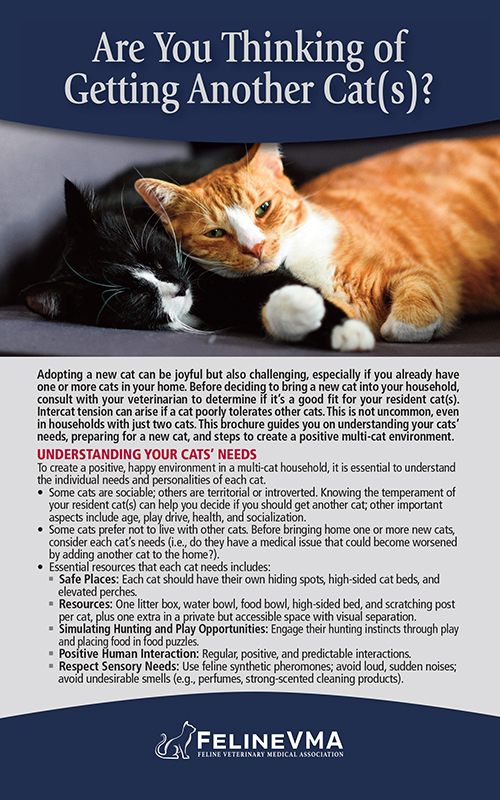Adopting a new cat can be joyful but also challenging, especially if you already have one or more cats in your home. Before deciding to bring a new cat into your household, consult with your veterinarian to determine if it’s a good fit for your resident cat(s). Intercat tension can arise if a cat poorly tolerates other cats. This is not uncommon, even in households with just two cats. This brochure guides you on understanding your cats’ needs, preparing for a new cat, and steps to create a positive multi-cat environment.
Understanding Your Cats’ Needs
To create a positive, happy environment in a multi-cat household, it is essential to understand the individual needs and personalities of each cat.
- Some cats are sociable; others are territorial or introverted. Knowing the temperament of your resident cat(s) can help you decide if you should get another cat; other important aspects include age, play drive, health, and socialization.
- Some cats prefer not to live with other cats. Before bringing home one or more new cats, consider each cat’s needs (i.e., do they have a medical issue that could become worsened by adding another cat to the home?).
- Essential resources that each cat needs includes:
- Safe Places: Each cat should have their own hiding spots, high-sided cat beds, and elevated perches.
- Resources: One litter box, water bowl, food bowl, high-sided bed, and scratching post per cat, plus one extra in a private but accessible space with visual separation.
- Simulating Hunting and Play Opportunities: Engage their hunting instincts through play and placing food in food puzzles.
- Positive Human Interaction: Regular, positive, and predictable interactions.
- Respect Sensory Needs: Use feline synthetic pheromones; avoid loud, sudden noises; avoid undesirable smells (e.g., perfumes, strong-scented cleaning products).
| If you think that your home is a good fit for additional cats, learn more about introducing additional cats with detailed steps and strategies here. |


